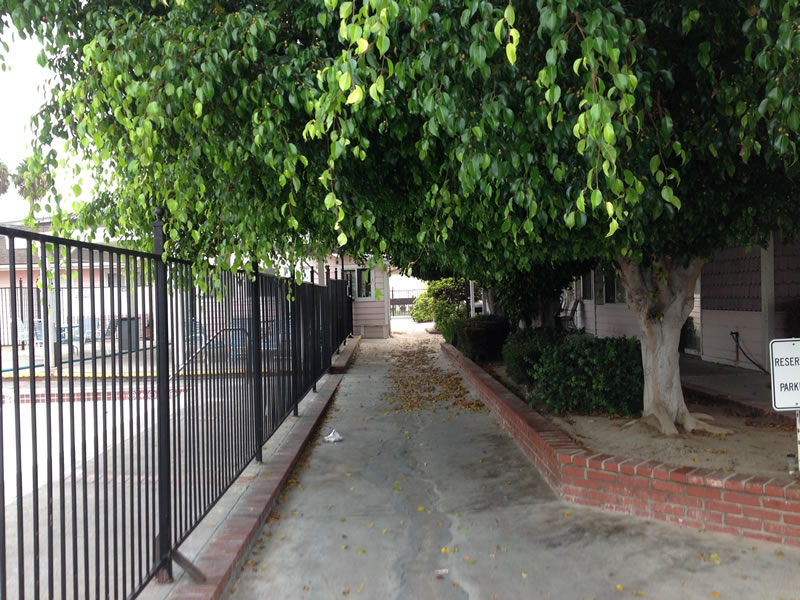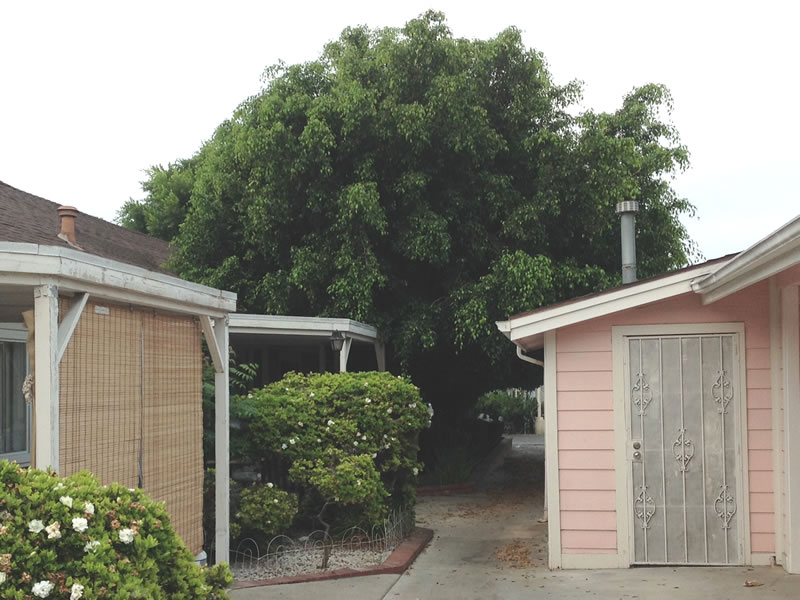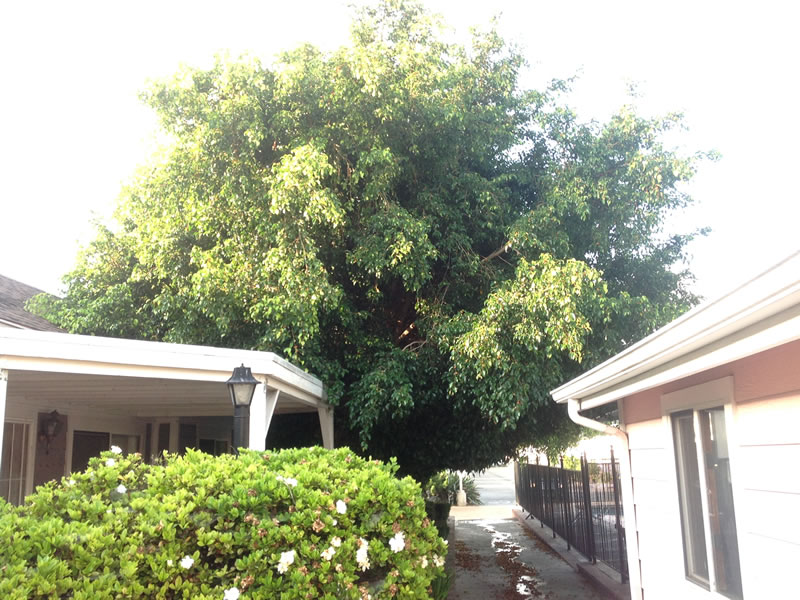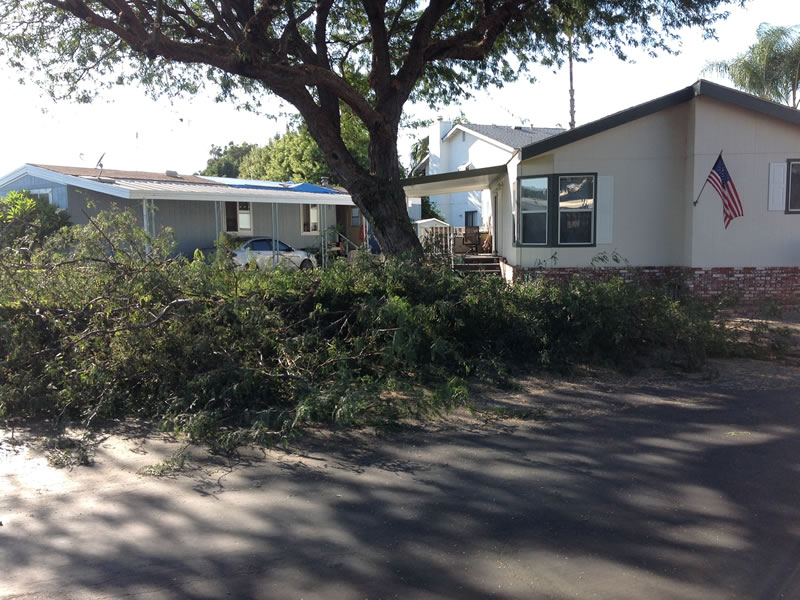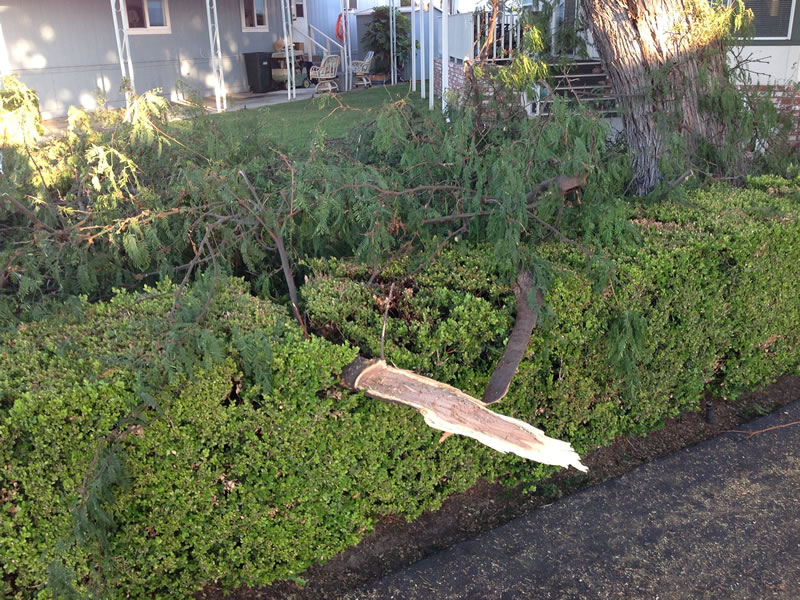California MRL Civil Code §798.37.5
Article 3.5 – Fees and Charges
§798.37.5 – Trees and Driveways
Author Note: The California MRL is very specific when it comes to Trees and Driveways on rental spaces. It also states that any mobilehome park rule or regulation shall be in compliance with this section, see item g.
- With respect to trees on rental spaces in a mobilehome park, park management shall be solely responsible for the trimming, pruning, or removal of any tree, and the costs thereof, upon written notice by a homeowner or a determination by park management that the tree poses a specific hazard or health and safety violation. In the case of a dispute over that assertion, the park management or a homeowner may request an inspection by the Department of Housing and Community Development or a local agency responsible for the enforcement of the Mobilehome Parks Act (Part 2.1 (commencing with Section 18200) of Division 13 of the Health and Safety Code) in order to determine whether a violation of that act exists.
More Information on Trees and Driveways
- With respect to trees in the common areas of a mobilehome park, park management shall be solely responsible for the trimming, pruning, or removal of any tree, and the costs thereof.
- Park management shall be solely responsible for the maintenance, repair, replacement, paving, sealing, and the expenses related to the maintenance of all driveways installed by park management including, but not limited to, repair of root damage to driveways and foundation systems and removal. Homeowners shall be responsible for the maintenance, repair, replacement, paving, sealing, and the expenses related to the maintenance of a homeowner installed driveway. A homeowner may be charged for the cost of any damage to the driveway caused by an act of the homeowner or a breach of the homeowner’s responsibilities under the rules and regulations so long as those rules and regulations are not inconsistent with the provisions of this section.
- No homeowner may plant a tree within the mobilehome park without first obtaining written permission from the management.
- This section shall not apply to alter the terms of any rental agreement in effect prior to January 1, 2001, between the park management and the homeowner regarding the responsibility for the maintenance of trees and driveways within the mobilehome park, except that upon any renewal or extension, the rental agreement shall be subject to this section. This section is not intended to abrogate the content of any existing rental agreement or other written agreements regarding trees or driveways that are in effect prior to January 1, 2001.
- This section shall only apply to rental agreements entered into, renewed, or extended on or after January 1, 2001.
- Any mobilehome park rule or regulation shall be in compliance with this section.
(Amended by Stats. 2014, Chap. 298 (AB 2753, Committee on Housing), eff. 1/1/2015)
The above California Civil Code section 798.37.5 is the law – period. There is nothing written in this law that makes the mobile home owner/resident, on rented/leased space, responsible for the trees on that space.
But then we have this conflicting MRL FAQ regarding Trees and Driveways where "HCD Legal Counsel" opined (in 1992) that this responsibility could be delegated to the homeowner through the rental agreement.
2016 MRL FAQs Regarding Trees and Driveways
Question: Can the park manager force residents to pay for maintenance or removal of a tree on their space and for maintenance of their driveway?
Answer: It depends on the facts of the case. The “tree and driveway” issue has been subject to major debate for years. A 1992 Department of Housing and Community Development (HCD) legal opinion characterized trees in mobilehome parks as fixtures belonging to the park owner, who is responsible for their maintenance. However, HCD legal counsel also opined that this responsibility could be delegated to the homeowner through the rental agreement. If the rental agreement requires the homeowner to be responsible for maintenance of the trees, then a 60-day notice probably does not have to be given, since it is already in the rental agreement. If the rental agreement does not make the homeowner responsible for maintenance of the trees, then the park owner is responsible for maintenance or removal of a tree on the homeowner’s space only if it is a hazard or constitutes a health and safety violation, as determined by the enforcement/inspection agency (usually HCD). (Civil Code §798.37.5).
More FAQs on Trees and Driveways
Homeowners may have to pay a fee for an inspection where there is a dispute between the park and the homeowner over the tree and where the homeowner requests an inspection by HCD or the local enforcement agency. Inspectors have wide discretion in this regard, and if the inspector does not find a violation, the homeowner may end up having to pay to remove the tree anyway.
With regard to driveways, the park owner is responsible for maintenance unless the homeowner has damaged the driveway or the driveway was installed by the homeowner. Legal counsel has suggested, however, that Civil Code Sec. 798.37.5(c) seems to leave open the question whether a current homeowner is responsible for maintenance of a driveway installed by a prior homeowner, arguing that such a prior installed fixture belongs to the park.
Recap:
- If the signed lease or rental agreement makes the homeowner responsible, then the homeowner must pay.
- If there is no stipulation of responsibility in the lease agreement, then the park is only responsible if it is a health and safety hazard.
- Driveways may be the responsibility of park unless the driveway was installed or damaged by the homeowner.
Bruce E. Stanton, Esq. – GSMOL Summary of §798.37
Passage of GSMOL sponsored and supported AB 862 by Assemblymember Lou Correa resulted in Civil Code section 798.37, which became effective January 1, 2001.
Comments: Passage of this new law represented a four-year battle by GSMOL and its members. In the last several years, an increasing number of park owners had begun amending park rules and regulations as well as rental agreements to make homeowners responsible for the costs of tree trimming and/or tree removal and driveway repair or replacement. Although basic landlord-tenant law provided that the owners of real property, in this case the park owners, would be responsible for maintaining fixtures on their land, which would include trees and driveways, park owners succeeded in shifting this responsibility to residents by amending rules and regulations until passage of this bill.
More Information from Bruce E. Stanton, Esq.
Depending upon the maneuvers by park owners to circumvent this new law, it is anticipated that GSMOL may need to seek further clarification of the statute in the future. However, the financial benefits to residents are substantial. In no uncertain terms, subpart a states that park management shall be solely responsible for the trimming, pruning, or removal of any tree on rental spaces.
The earliest attempt at circumvention by some park owners includes an amendment to rules and regulations attempting to require homeowners to trim trees on mobilehome spaces so that they do not become health and safety hazards. It is GSMOL’s position that such amendments to rules and regulations are still a violation of 798.37.5(a).
It is park ownership and management which should trim and prune trees so that health and safety violations do not develop. Obvious health and safety violations would be a branch that grows so that it begins to hit the roof, awning or rain gutters of a mobilehome.
With respect to driveways, a distinction occurs, depending upon who originally installed the driveway on the rental space. Driveways installed by a homeowner must, under this law, thereafter be maintained at the expense of the homeowner occupying the space. However, most driveways in California were originally installed by park management or ownership. Under the law, park ownership and management is responsible for the repair and replacement of such driveways. Please note that park management alone is responsible for the cost of repairing damage to driveways caused by tree root damage. It is estimated that passage of this new law will save every mobilehome owner in the state $500 or more per year.
Bruce E. Stanton, Esq., Corporate Counsel, GSMOL, Inc.
Sierra Corporate Management
Rental Agreement/Lease Clauses
MAINTENANCE OF IMPROVEMENTS: Tenant is financially responsible to maintain, repair and/or replace Tenant's home and all equipment, structures and other improvements to Tenant's home and space in good and safe condition and repair and in an aesthetically pleasing manner at all times. This obligation includes, without limitation, the home, accessory structures and equipment, fences, driveways, banks, trees, shrubbery, lawns and other landscaping located on Tenant's space regardless of whether Tenant is the original occupant of the space or purchased the home from a former occupant of the space. This obligation also applies to Tenant regardless of whether or not Tenant installed the improvements or purchased the home with the improvements already installed on the home and/or space. This obligation also includes the responsibility to insure that the drainage is maintained on the space so as to prevent water from accumulating on the space, under the home or running off so as to adversely affect other spaces and/or property; that all required setbacks and lot line requirements are met; that there are no encroachments on other spaces and/or property; that all building codes and other similar requirements have been met; and that all required permits have been obtained.
Sierra Corporate Management Lease Agreement
Residents are responsible for the control and maintenance of all vegetation on the space, including any vegetation planted by previous Residents of the space.
Sierra Corporate Management Rules and Regulations
Wikipedia Definition of Vegetation
Vegetation is assemblages of plant species and the ground cover they provide. It is a general term, without specific reference to particular taxa, life forms, structure, spatial extent, or any other specific botanical or geographic characteristics. It is broader than the term flora which refers to species composition.
Perhaps the closest synonym is plant community, but vegetation can, and often does, refer to a wider range of spatial scales than that term does, including scales as large as the global. Primeval redwood forests, coastal mangrove stands, sphagnum bogs, desert soil crusts, roadside weed patches, wheat fields, cultivated gardens and lawns; all are encompassed by the term vegetation.
Vegetation – Wikipedia

